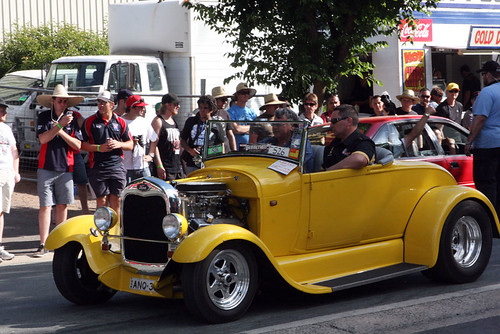Summary
Fuse has been designed from the ground up to support relationships between the car and everything else in the vehicle ecosystem.

Fuse is a connected-car product. But it's more than that. Fuse is also a system for modeling the relationships that a car has with people, organizations, places, things, and so on. Because of their utility, expense, longevity, and mobility, cars have numerous, significant relationships.
A relationship is more than an identifier. At the least, a relation implies means of communication that leads to interaction. Relationships are build on mutual exchange of value (not necessarily monetary).
Among the most important relationships that a car has is with its owner. But there's more than one owner. At the beginning of it's life, the car's owner is the manufacturer. Later the car is owned by the dealer, and then by a person or finance company. And, of course, cars are frequently resold. Over the course of it's lifetime a car will have many owners.
The nature of relationships change over time. For example, the car probably needs to maintain a relationship with the manufacturer and dealer after they are no longer owners. With these changes to the relationship come changes in rights and responsibilities.
In addition to relationships with owners, cars also have relationships with other players in the vehicle ecosystem including: fuel vendors, mechanics, parts vedors, insurance companies, finance companies, and government agencies. Vehicles exchange data and money with these players over time.
In addition to the owner, the car has relationships with other people: drivers, passengers, and pedestrians.
And the car might have relationships with other vehicles, traffic signals, the roadway, and even potholes.
Each of these relationships is based on unique identities for the various players. Each of the relationships are based on communication channels that need to be authenticated, authorized, and controlled by policy. Each has different attributes, different rights, different responsibilities, different needs, and different frequencies of use. Some are permanent or semi-permanent. Others are temporary or even transient. For example, a car will have a (semi-)permanent relationship with its manufacturer and owner, a temporary relationship with the service shop changing the oil, and a transitory relationship with the traffic signal it's sitting at and other vehicles around it on the roadway.
Built correctly, these relationships form a model of the entire vehicle ecosystem. Relationships link the models for individual cars, the people who interact with them, roads, and so on to provide a vast, distributed online system that mirrors the vehicle ecosystem. Such a collection of linked, active models could provide a system for understanding traffic and the economic and social structures around car ownership and use.
Fuse builds these models using something we call a pico, short for "persistent compute object." Picos allow things to exist online as long-lived entities with a unique identity and purpose. Picos allow any thing, whether it's active, like the car, or passive, like the road or a pothole, to have an online representation that supports persistently storing data, running programs, and communicating with other things. Picos allow things like your car to support relationships and form networks that model their features, functionality, and utility in the physical world.
The real power of the Internet of Things is the relationships between them. What's missing in the CompuServe of Things are the relationships. Cars show this clearly because of their rich connections to other players in the vehicle ecosystem. Fuse brings the relationship network in that ecosystem online and makes it part of the Internet.
Credits: Kevin Cox outlined some of the benefits of connected cars in the project VRM mailing list a few days ago. I've used some of them above.
I delivered this post as a talk at IRM Summit 2014. Slides on Slideshare.




